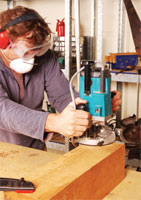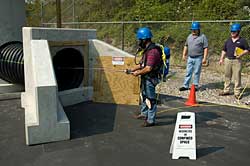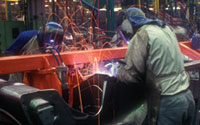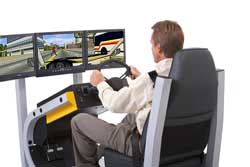
November 2007
- Are Your Electrical Workers Qualified?
- Gas Monitoring and Rescue in Confined Spaces
- The Ins and Outs of Voluntary Respirator Use
- Sterile Emergency Eyewash Arrives
Click here to subscribe.
Features
By Raymond Wagner II
R-E-S-C-U-E. The Merriam-Webster Dictionary defines rescue as "to free from danger, harm or confinement." Confined space rescue can be a very dangerous act. Statistics show that more than 60 percent of those who die in confined spaces are people attempting to perform a rescue.
By Christine L. Mello
With 126 million receptors in each retina, our eyes are the primary means by which we experience the world. There's simply no way to put a value on our vision and its impact on our day-to-day activities. Unfortunately, the eyes are also the body part most vulnerable to injury in the workplace.More than 2,000 eye injuries occur on the job every day, according to the U.S. Bureau of Labor Statistics. Almost 100,000 each year lead to temporary or permanent vision loss.

By Linda J. Sherrard
The simple things employees do every day are what can cause injury, ironically enough. Scalping from someone's hair being wrapped around a shaft or caught in a machine and ripped out is one example. Others are acid or chemical burns, lacerations from bumping into pipes or product being slung at the worker through grinding, and toxic chemical exposures.
By Kenneth Cybart
OSHA has long required employers to evaluate the workplace for electrical hazards. Most companies are familiar with possible shock hazards and know that OSHA requires all qualified workers be properly trained to work on or near electrical equipment. However, many safety managers are unaware that OSHA also requires so-called unqualified personnel to be trained to recognize and avoid electrical hazards.
By Roland Berry Ann
The National Institute for Occupational Safety and Health (NIOSH) conducts a range of efforts in the areas of research, information, and service. The NIOSH program portfolio focuses on relevance, quality, and impact. This is achieved through strong involvement of partners and stakeholders through the entire research continuum (conceiving, planning, conducting, translating, disseminating, and evaluating). The programmatic and support structures provide a foundation for staff to carry out its mission to provide national and world leadership to prevent work-related illnesses and injuries.

By Chris Lange
The day began like any other for an experienced contractor of 15 years. He left his house at 7 a.m. to perform storage tank maintenance at a local chemical plant. This was a very routine task, one he had performed hundreds of times. As he kissed his wife and two young children goodbye, he anticipated being done early this day and told them that he would see them for dinner. As he backed his car down the driveway, he honked the horn and waved goodbye. Sadly, this was the last time he would ever see his family.

By Linda J. Sherrard, D. C. Breeding
Workplace discussions of respiratory protection frequently focus on required protection. We may ask, "What about comfort? Are you feeling secure and protected in work environments from potential or imagined respiratory hazards?" We want our employees to feel comfortable at work. One problem is when they "feel" better wearing a respirator when there is no real established need or exposure that would require it.

By Donald R. Groover, CIH, CSP
Creating the kind of culture where we go longer periods of time without injuries--and where no injury is acceptable--is a serious undertaking. In the past three articles, we have sketched the characteristics we have observed in organizations that do just this. Notably, the emphasis has been on the role of leaders: taking ownership for the culture, systems, and results; developing an exposure (vs. injury) focus; and rethinking the measurements and metrics that drive safety functioning and shape the assessment of our efforts.
Departments
By Robert Pater
Catalytic Leaders work to perceive what's really going on, rather than stumbling, eyes obscured by outdated information or by their own or others' biases. They don't persist with diminishing return strategies or ignore fixes that may be "different."

By Marc Barrera
Some learn by listening, others by doing. Everyone learns from experience. But when we're learning defensive driving, that experience comes at the cost of increased risk because it requires going out into the real world to practice classroom-taught lessons.